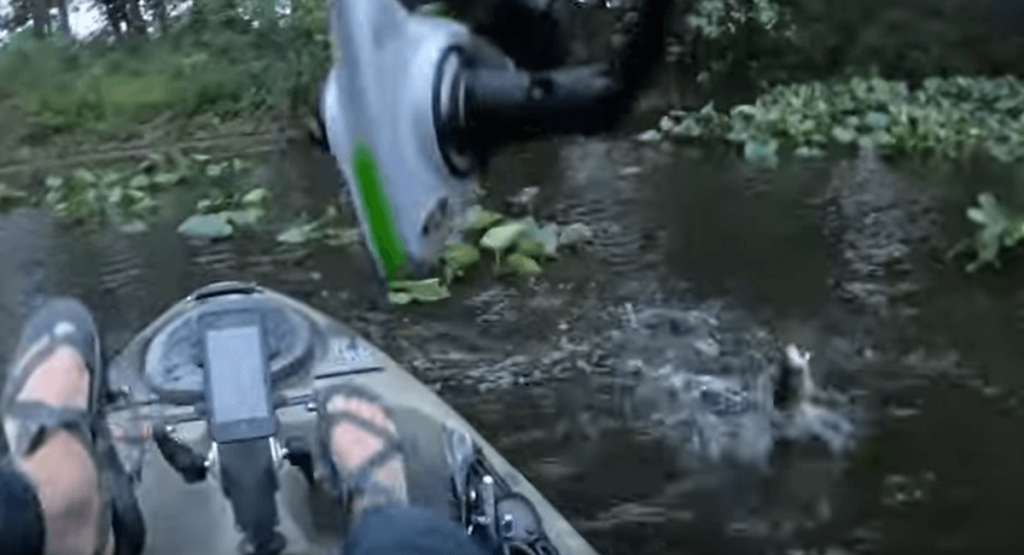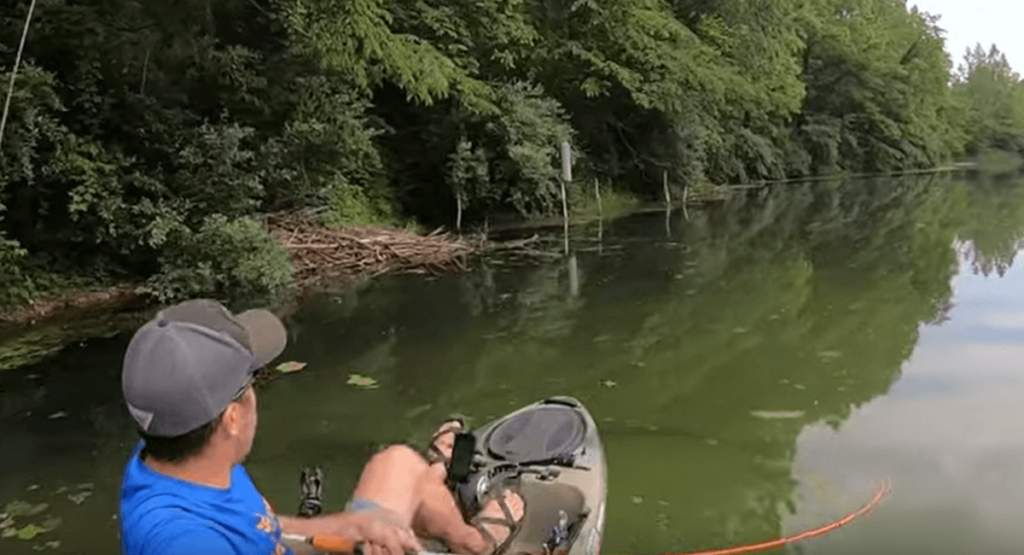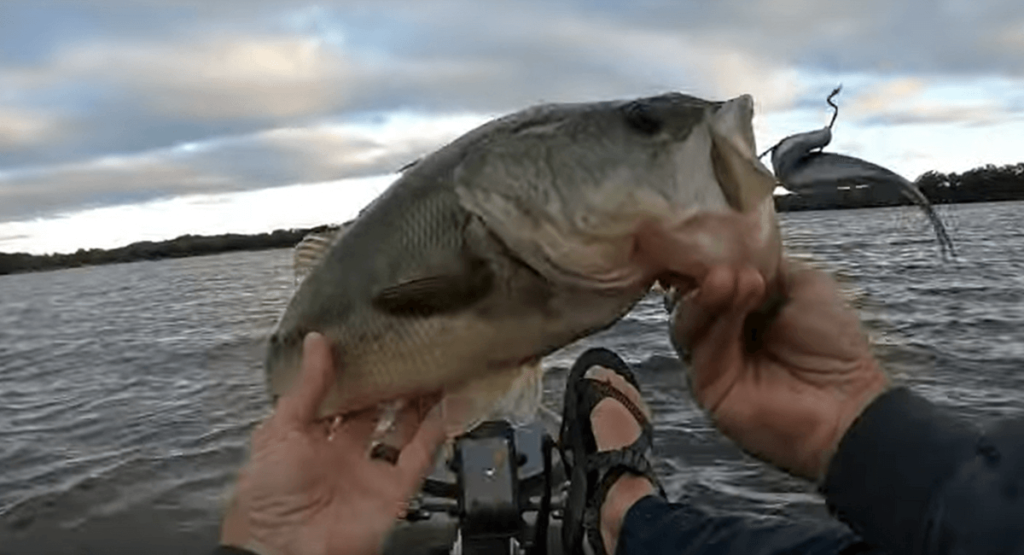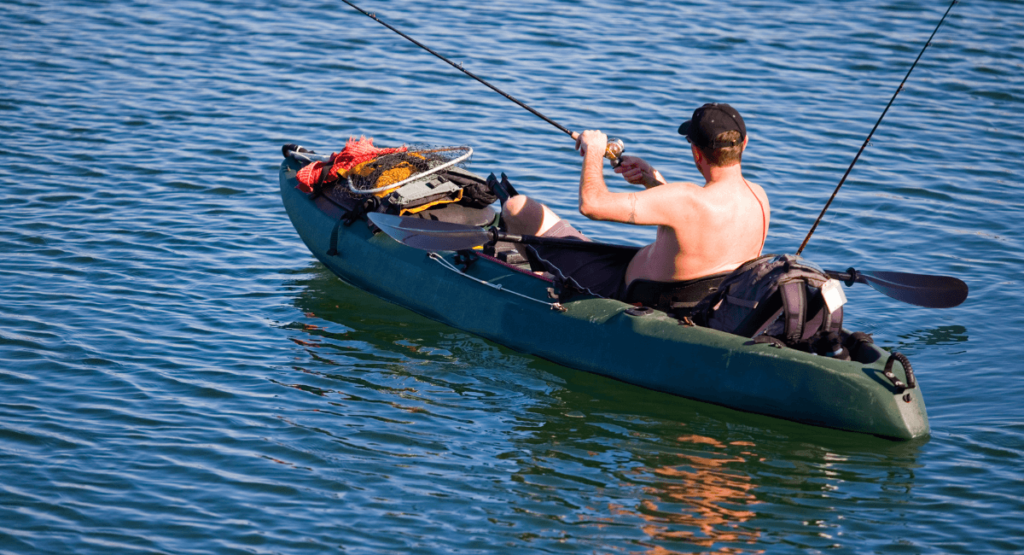For beginner kayak fishing tips, focus on safety, gear, and technique. Start with learning basic paddling and navigation skills, choose the right equipment and research local fishing spots.
Kayak fishing can be a rewarding and enjoyable experience for beginners. With the right preparation and knowledge, you can set yourself up for a successful and memorable outing. Whether it’s understanding the importance of personal safety or mastering the art of casting from a kayak, there are several key tips to consider.
This guide will provide you with valuable insights and strategies to help you get started on your kayak fishing journey. So, grab your gear and get ready to explore the world of kayak fishing!
Choosing The Right Kayak
Choosing the right kayak is essential for a successful and enjoyable fishing experience. The right kayak will provide stability, maneuverability, and easy access to your gear and equipment. As a beginner, it’s important to consider the different types of kayaks available and their specific features before making your decision.
Sit-on-top Vs. Sit-inside
When considering the type of kayak, it’s important to weigh the pros and cons of sit-on-top and sit-inside kayaks. Sit-on-top kayaks are popular for fishing due to their open design, offering easy access to gear and providing a more stable platform for casting. On the other hand, sit-inside kayaks may offer better protection from the elements and are often favored for cold-water fishing.
Stability And Maneuverability
Stability and maneuverability are crucial factors to consider when choosing a kayak for fishing. A stable kayak will provide a solid platform for casting and reeling in fish, while good maneuverability ensures easy navigation in different water conditions. Look for kayaks with a wider hull for enhanced stability, and consider shorter kayaks for improved maneuverability, especially in narrow waterways.
Storage Options
Storage options are vital for keeping your fishing gear organized and easily accessible. Look for kayaks with ample storage compartments, such as watertight hatches, bungee cords, and built-in rod holders. Additionally, consider the weight capacity of the kayak to ensure it can accommodate your gear without compromising stability.
Essential Gear And Equipment

Kayak fishing is an exciting and rewarding activity, but to have a successful and safe fishing trip, it’s essential to have the right gear and equipment. Here are some important gear and equipment considerations for beginners looking to start kayak fishing:
PFD and Safety Essentials
Personal Flotation Device (PFD) is a crucial piece of safety equipment for kayak fishing. Always wear a properly fitted and US Coast Guard-approved PFD. Additionally, carry a whistle, a signaling device, and a navigation light if fishing in low light conditions.
Paddle Selection
Choosing the right paddle can significantly impact your kayaking experience. Look for a lightweight, sturdy paddle that is suitable for your height and preferred paddling style. Consider investing in a high-quality, adjustable kayak paddle with drip guards to ensure comfort and efficiency on the water.
Fishing Gear Setup
When setting up your fishing gear on a kayak, it’s important to consider the limited space and the need for secure stowage. Opt for compact and versatile fishing gear, such as a collapsible fishing rod, a tackle box with built-in storage trays, and a rod holder attachment for your kayak. Use a leash to secure your gear and prevent loss in case of accidental tipping over.
Basic Paddling Techniques

Kayak fishing beginners must master basic paddling techniques to navigate effectively. This includes proper gripping and posture, basic paddle strokes, and moving in different water conditions. Let’s look at these techniques in detail:
Proper Gripping And Posture
Ensure a firm grip on the paddle at shoulder-width apart with bent elbows for control. Maintain an upright posture to balance and avoid fatigue.
Basic Paddle Strokes
Practice forward stroke by placing the paddle near the kayak and pulling it back. Master the backward stroke for reversing by pushing the paddle away from the kayak.
Moving In Different Water Conditions
- For calm waters, use smooth strokes with even pressure on both sides.
- In windy conditions, angle strokes into the wind for better control.
- When navigating currents, adjust the paddle angle to maintain the course.
Understanding Fishing Techniques

Fishing techniques play a crucial role in the success of any fishing expedition, and this holds for kayak fishing as well. As a beginner, it’s essential to have a clear understanding of the various techniques involved in this exciting sport. In this section, we’ll explore three fundamental fishing techniques that can help you improve your kayak fishing skills: casting and retrieving, spotting fish and lures, and the importance of patience and persistence.
Casting And Retrieving
Casting and retrieving is an essential technique that every beginner kayak angler should master. Proper casting allows you to accurately place your lure in the desired location while retrieving it attracts the attention of the fish. To improve your casting and retrieving skills:
- Practice your casting technique: Find an open space away from other anglers and practice your casting technique using different lures. Focus on getting accurate and precise casts, targeting specific spots in the water.
- Vary your retrieval speed: Experiment with different retrieval speeds to determine what attracts fish the most. Sometimes a slow and steady retrieval will work, while other times a fast or erratic retrieval may be more enticing.
- Observe the behavior of successful anglers: Don’t hesitate to observe and learn from experienced anglers. Pay attention to their casting and retrieving techniques, and try to incorporate those techniques into your own fishing routine.
Spotting Fish And Lures
Spotting fish and lures is another crucial aspect of kayak fishing. Being able to identify fish and choose the right lure can significantly improve your chances of catching a variety of fish species. Here are some tips to help you spot fish and select the proper lure:
- Observe the water’s surface: Look for disturbances on the water’s surface, such as ripples or waves, which could indicate the presence of fish. Keep an eye out for fish jumping or breaking the surface to feed.
- Watch for baitfish activity: If you notice a large congregation of baitfish in a particular area, chances are there might be larger predator fish nearby. Target these areas with lures that mimic the appearance and movements of the baitfish.
- Pay attention to underwater structures: Fish often seek shelter or feed near underwater structures like submerged rocks, weeds, or fallen trees. Casting your lure near these structures can increase your chances of attracting fish.
Patience And Persistence
Patience and persistence are essential virtues in kayak fishing. Fish may not always bite right away, so it’s crucial to remain patient and persistent. Here’s why patience and persistence matter:
- Stay in a location longer: Sometimes, fish may take time to discover or decide to bite your lure. Avoid constantly moving from spot to spot and be willing to spend a significant amount of time in a particular location.
- Experiment with different techniques: If you’re not having luck with a particular technique, don’t be afraid to switch things up. Try using different lures, retrieval speeds, or depths until you find a combination that works for the prevailing conditions.
- Learn from every fishing experience: Remember that every fishing trip is an opportunity to learn. Even if you don’t catch a single fish, use the experience to observe and gather valuable information about the behavior of fish, the water conditions, and the techniques that might work best for future trips.
Navigating Fishing Locations

When it comes to kayak fishing, navigating the fishing locations is crucial for a successful and enjoyable experience on the water. Understanding tides and currents, selecting fishing hotspots, and respecting wildlife and the environment are key factors to consider. In this section, we will explore these elements in more detail.
Understanding Tides And Currents
Tides and currents play a significant role in determining the movement of water and, consequently, the behavior of fish. As a beginner kayak angler, it’s important to have a basic understanding of how tides and currents work. Tides, which are caused by the gravitational pull of the moon and the sun, create a rise and fall in the water level. This movement affects the availability and accessibility of fishing spots.
Similarly, currents are the horizontal movement of water caused by a variety of factors, such as wind, the shape of the coastline, and the interaction between tides and other natural forces. Being aware of the current’s direction and intensity can help you position your kayak strategically, enabling you to cover more ground and increase your chances of catching fish.
Selecting Fishing Hotspots
Choosing the right fishing hotspot is vital for a fruitful kayak fishing trip. To identify the best locations, consider factors such as the presence of structure, underwater vegetation, and baitfish. Fish are often attracted to areas with various types of structures, such as reefs, rock piles, submerged logs, or channels. These structures provide hiding places and ambush points for fish.
Underwater vegetation, such as seagrass beds or lily pads, is another indicator of a potentially productive fishing spot. These areas serve as nursery grounds for many fish species and offer ample feeding opportunities. By targeting these areas, you increase your chances of encountering fish.
Baitfish, which are the primary food source for larger predatory fish, are also worth considering when selecting your fishing hotspot. Look for signs of baitfish activity, such as jumping or diving birds, swirling or splashing water, or even communication between fishermen, as these are indicators that larger fish may be nearby.
Respecting Wildlife And Environment
While enjoying your kayak fishing adventure, it’s essential to respect the wildlife and environment around you. Keep in mind that you are entering the natural habitat of various aquatic species and should strive to minimize your impact. Here are a few simple guidelines to ensure a responsible fishing experience:
- Dispose of any garbage or waste properly, either by bringing it back with you or using designated trash receptacles.
- Avoid damaging or disturbing any vegetation, including underwater plants and shoreline vegetation.
- Observe any fishing regulations or restrictions in the area you’re fishing in, such as catch limits or protected areas.
- Be mindful of noise levels and avoid excessive noise, as it can disturb both the fish and other people enjoying the outdoors.
- If you encounter wildlife, such as birds or mammals, maintain a respectful distance and avoid any actions that could disturb or harm them.
By adhering to these guidelines, you can help preserve the natural beauty of the fishing locations and ensure a sustainable environment for future generations of anglers.
Safety And Emergency Preparedness
Kayak fishing offers a thrilling outdoor adventure, but safety should always remain a top priority for beginners. Being prepared for emergencies on the water is crucial to ensure a safe and enjoyable experience. From weather awareness to self-rescue techniques and communication tools, here are essential tips to stay safe while kayak fishing.
Weather Awareness
Stay informed about the weather forecast before heading out on your kayak fishing trip to avoid unexpected storms or hazardous conditions.
Self-rescue Techniques
Learn basic self-rescue techniques such as how to re-enter your kayak from the water in case of capsizing.
Communication And Emergency Tools
Carry essential communication tools like a whistle, marine radio, or personal locator beacon to signal for help in case of emergencies.
Etiquette And Respect For Other Anglers
Learn the basic etiquette and respect for other anglers when kayak fishing with these essential tips for beginners. Gain a deeper understanding of how to navigate shared fishing spaces and ensure a positive experience for all.
Maintaining Distance
Kayak fishing beginners should always maintain a respectful distance from other anglers. This includes avoiding casting lines too close to other kayaks and keeping a safe space while navigating the waters. Being mindful of others’ fishing space can lead to a more enjoyable experience for everyone.
Respecting Fishing Boundaries
When out on the water, it’s important to be aware of designated fishing areas and respect the boundaries set by fellow anglers. Adhere to any posted regulations and be considerate of the fishing grounds of other kayakers. This not only shows respect for the environment but also for the fellow angling community.
Cleaning Up After Yourself
Leaving the environment clean and free of debris is crucial for maintaining a positive image of the kayak fishing community. Be sure to pack out all trash and dispose of it appropriately. A pollution-free environment is not only beneficial for wildlife but also ensures the overall enjoyment of the outdoor experience for everyone.
Tips For A Successful Outing
Embarking on a kayak fishing adventure can be exhilarating for beginners, but success largely depends on effective planning, adaptability to changing conditions, and learning from each experience. By mastering these key elements, you can ensure a fruitful and enjoyable outing every time.
Planning And Preparation
Before hitting the water, it’s crucial to meticulously plan and prepare for your kayak fishing trip. This includes researching the fishing location, checking the weather forecast, packing essential gear such as a personal flotation device, fishing rod, and tackle box, and ensuring that your kayak is in top-notch condition.
Adapting To Conditions
Being adaptable to the changing conditions is vital for a successful kayak fishing expedition. Keep an eye on the weather and water conditions, and be prepared to modify your fishing strategy accordingly. This might involve adjusting your bait selection, seeking shelter from strong winds, or changing your paddling route to maneuver through unexpected obstacles.
Learning From Each Experience
Every kayak fishing trip offers valuable learning opportunities. Whether it’s refining your casting technique, understanding the behavior of different fish species, or discovering new fishing spots, embracing each experience as a chance to learn and improve is essential for growth as a kayak angler.
By focusing on meticulous planning, adaptability, and continuous learning, beginners can set themselves up for successful kayak fishing outings. These tips pave the way for enjoyable and rewarding experiences while honing your skills as an angler.
Frequently Asked Questions On Kayak Fishing Tips For Beginners
What Safety Gear Is Essential For Kayak Fishing?
Safety gear for kayak fishing includes a PFD, whistle, light, and first aid kit.
How Can Beginners Choose The Right Kayak For Fishing?
Beginners should consider stability, weight capacity, and storage options when choosing a fishing kayak.
What Are Some Basic Kayak Fishing Techniques For Beginners?
Basic kayak fishing techniques for beginners include casting, anchoring, and navigating water currents effectively.
How Should Beginners Handle Fish While Kayak Fishing?
Beginners should handle fish with care, using appropriate tools and techniques to ensure their safety.
Conclusion
Incorporate these kayak fishing tips into your next adventure for an unforgettable experience on the water. From selecting the right gear to mastering essential techniques, you are now equipped to navigate the world of kayak fishing with confidence. Happy fishing!
